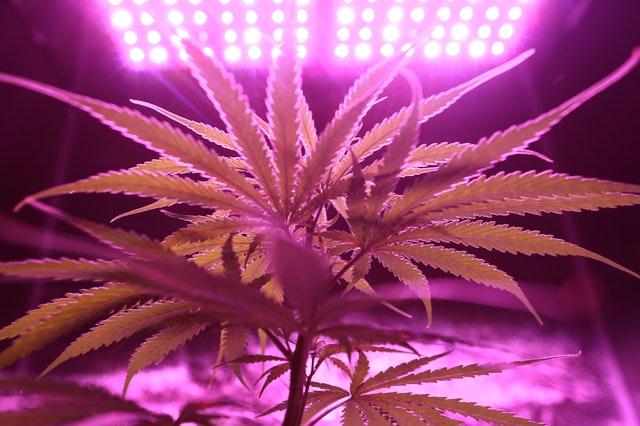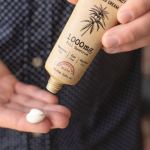- Like
- SHARE
- Digg
- Del
- Tumblr
- VKontakte
- Flattr
- Buffer
- Love This
- Save
- Odnoklassniki
- Meneame
- Blogger
- Amazon
- Yahoo Mail
- Gmail
- AOL
- Newsvine
- HackerNews
- Evernote
- MySpace
- Mail.ru
- Viadeo
- Line
- Comments
- Yummly
- SMS
- Viber
- Telegram
- JOIN
- Skype
- Facebook Messenger
- Kakao
- LiveJournal
- Yammer
- Edgar
- Fintel
- Mix
- Instapaper
- Copy Link
Introduction
The marijuana industry has been exploding in recent years. Nowadays, a ton of states will let you grow it at home legally whether it is for medicinal or recreation use.
However, people still need to know-how. Marijuana can be a high maintenance plant and for a first-time grower, it can seem like a daunting task. Ventilation and grow lights are essential components of any indoor growing operation.
How do you know which lights are the best, though?
Grow Light Considerations
All plants create energy through photosynthesis. In nature, the sun provides all the light they need. If you are growing marijuana indoors, you’ll need to provide it yourself. Lights differ in a few key ways. How much light do they produce? What spectrum of light do they produce? How hot do they run? These are all important questions any reputable California dispensary would ask.
Spectrum and Intensity of Light
Wattage describes the amount of light a bulb produces. More light means a larger plant. So, for the biggest plants, you’ll want as many watts as possible. Besides wattage, you’ll want to consider the spectrum of light. Younger plants prefer bluer wavelengths, while flowering plants prefer redder tones.
Efficiency
Growing marijuana indoors can become expensive. Some lights use a ton of electricity, adding to your cost. Other lights run more efficiently. If you’d like to keep costs as low as possible, then use more efficient bulbs. The savings can be dramatic.
Ventilation
Certain lights produce a ton of heat. Your plants are sensitive to ambient temperatures. Let’s say you’ve got a setup with super hot bulbs. In that case, you’d have to install some ventilation. Otherwise, your plants will suffer from burnout. Without proper ventilation, your plants can also suffer from pesky critters like spider mites which will destroy your plant.
Types of Grow Lights
Now, you know what to keep in mind while comparing bulbs. Still, you need to know which bulbs fit which criteria. Each type of bulb has different characteristics, making them suitable for different circumstances. We can divide up bulbs into 5 different categories.
High-Intensity Discharge (HIDs)
High-intensity discharge bulbs can be broken up into 2 categories. Both of them share things in common. Any HID bulb produces light by running an arc between two nodes. In between these nodes, gas is kept under pressure inside of a ballast. The type of gas is what differentiates the different HIDs. However, HIDs are generally inexpensive to purchase, which means they’re perfect for beginners.
Metal Halide (MHs)
Metal halide bulbs belong to the HID class of bulbs. These use mercury and other metal halides to produce a blueish light. That blue light is commonly used during vegetative growth stages.
High-Pressure Sodium (HPS)
High-pressure sodium bulbs use a combination of sodium, mercury, and xenon. They create light with more of a reddish hue. That makes them better for flowering plants.
Compact Fluorescents (CFLs)
CFLs are the same type of bulbs you might find in your garage. They are tube-shaped and produce a whitish-blue light. Vegetative plants do well with these, but they aren’t the best for flowering plants. Perhaps, the best thing about these bulbs would be their efficiency.
Light Emitting Diodes (LEDs)
LEDs are more expensive up front, but they don’t use a ton of electricity. So, in the long run, they are the most affordable option. Not only that, but they also run a lot cooler. Certain bulbs even let you change the spectrum of light they produce.
Choosing the Right Lights for Your Operation
Now, how do you choose the right bulbs for your indoor growing operation? First and foremost, look at your budget. Then, consider your plant’s phase of growth.
Flowering Plants
Flowering plants do best under a reddish light. Thus, HPS bulbs and LED bulbs would be your best bet.
Vegetative Plants
Vegetative plants like blueish light. So, you have more options for these. LEDs, MHs and CFLs can all do the job well.
PRO TIP: Light Time Guidelines
Depending on what stage your plant is in (vegetative vs. flowering) will also affect how much light time they will need. You want to make sure they get ample light time which risking burn on your plants. Those in a vegetative state should receive 18-24 hours of light a day. Those that are in a flowering state, however, require less light and should be in darkness for 12 hours each day.
How to Choose the Right Grow Lights
Growing marijuana indoors is an amazing hobby. At first, choosing the right equipment might seem a bit daunting. Learning how the different bulbs work could simplify things for you. Plants prefer different wavelengths during specific phases of their life. Vegetative plants are fond of blue light while flowering plants prefer red. By choosing an appropriate bulb, you’ll maximize your harvest. Advanced growers will even swap bulbs depending on their plant’s growth phase.


